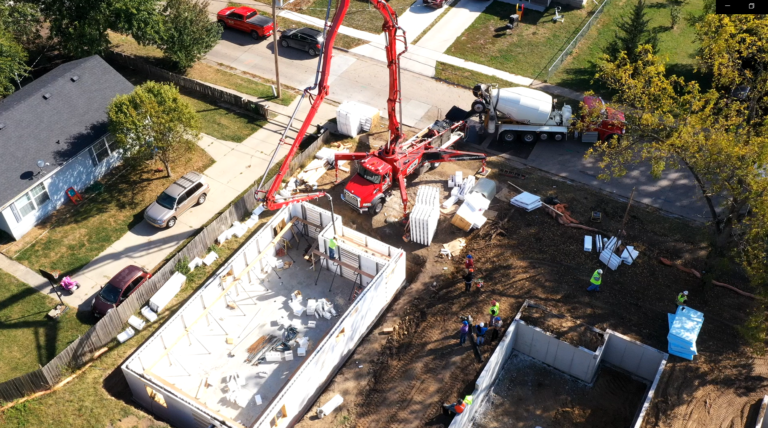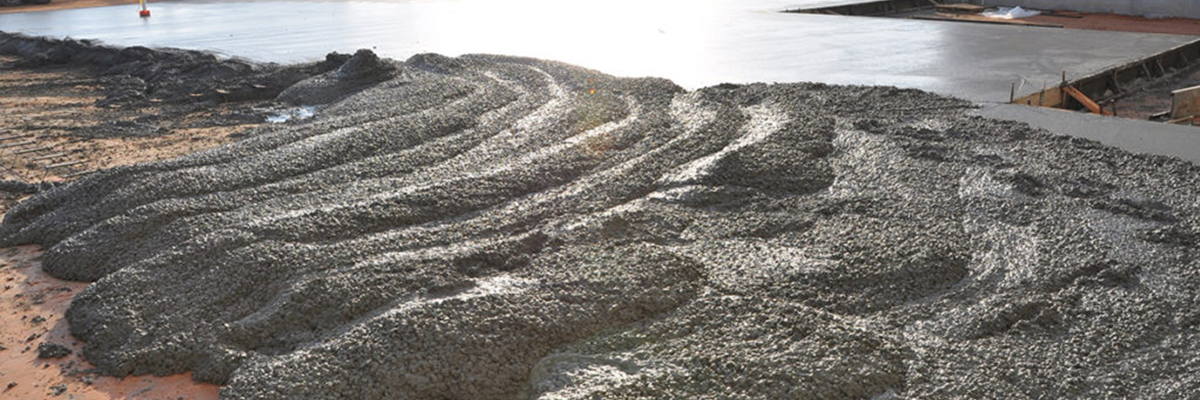There’s an innovative solution to conventional labor-intensive, time-consuming processes in ICF construction and it’s only produced by Helix St
The construction industry creates more waste and generates more pollution than most other industries. The damaging materials, tools and methodologies that have long been a part of the industry are having irreversible effects on our planet. Something needs to be done.
If you’re like a growing number of professionals, you know that we all need to take significant steps to lessen the harm to our natural environment while accommodating the needs of a growing population.
In the case of concrete, radical thinking is required. Somehow, we need to create products that use less steel, less concrete, fewer transportation costs, while cutting the number of days that rebar installation crews are needed and also creating an end product that lasts longer.
Construction is a Leading Cause of Global Warming
According to the United Nations Environment Program, “Buildings and their construction together account for 36 percent of global energy use and 39 percent of energy-related carbon dioxide emissions annually.” To combat the environmental challenges of today and tomorrow, the construction industry requires innovation, including optimization of design standards.
As the most widely used artificial material in the world, concrete, which construction professionals agree releases massive amounts of CO2, is ripe for drastic and immediate innovation. How can we address the challenges of concrete? Does this involve altering the concrete mix? How can we optimize its design? How can we make it stronger? How can we make it last longer? Are there other steel reinforcements we can use to ensure concrete’s strength?
How Can the Industry Use Alternative Concrete Reinforcement Materials to Solve Sustainability?
Building codes allow for alternative, tested and approved solutions to standardly implemented products. Only one alternative concrete reinforcement has ICC and UES reports and has full code approval to carry building loads under the ACI 318, IBC and IRC – Helix Micro Rebar.
Helix Micro Rebar is a construction industry game-changer that everyone should consider using, whether you’re an engineer, developer, contractor, precaster, ICF builder or ready-mix producer. It’s a one-inch twisted steel reinforcement that increases concrete strength and resilience and eliminates the need for traditional rebar and mesh.
This tiny solution to a massive problem can reduce steel reinforcement weight to only a quarter of the weight of rebar, while significantly increasing concrete’s resistance to cracking, impact, fatigue and bending. Depending on the application, concrete itself can be reduced with up to 100% of your wire mesh and rebar replaced. This helps to greatly reduce greenhouse gas emissions. For example, the Helen Devos Children’s Hospital in Grand Rapids, Michigan had its carbon footprint reduced by 63 tons due to the reduction in steel required.

So, What Does This Mean for Global Warming and the Concrete Industry?
It means that the construction industry can change if it decides that the planet is worth saving. It means that we can now do things that were seemingly impossible before, like making better concrete with less.
With a product like Helix Micro Rebar used in the place of a pound of rebar, there is a CO2 footprint reduction from 1.8 lb to 0.6 lb. This results in up to a 55% reduction in Global Warming Potential (Co2– eq) versus traditional rebar or wire mesh reinforcement.
Helix Micro Rebar can also assist in LEED certification in the Environmental Performance category:
- EQc4.3 Low-emitting Materials: 1 point
- IDc1 Innovation in Design: 1–4 points
- MR 5 Regional Materials: 1–2 points
- MRc2 Construction Waste Management: 1–2 points
- MRpc61 Material Disclosure and Assessment: 1–2 points
- MRpc63 Whole Building Life Cycle Assessment: 1 point
As a small example of what is possible, the first use of Helix Micro Rebar by Custom Concrete resulted in 90% less rebar in the footings and 98% less rebar in the slabs. Custom Concrete was pleased with the results and couldn’t wait to make it a standard material for their operations, with Casey Harvey, Director of Operations for Custom Concrete saying, “After we saw the time savings on that one job we were sold.”
The Future of Construction is With Helix Steel
Helix Steel is actively involved in developing better ways to build for the entire industry as well with its outreach and leadership in committees developing industry standards at the American Concrete Institute (ACI), ASTM International, National Precast Concrete Association (NPCA) and National Road Research Alliance (NRRA).
Helix Steel can even provide you with a LEED and/or Environmental Impact Reduction Analysis for your project. Submit your project details to Helix Steel’s engineering team today to learn more about how we can work together for the good of the planet.
More News

Building Better Homes Starts with ICF and Helix Micro Rebar

The Better Way to Build in Every Direction
Whether you’re building below-grade or above-grade, the tiny twisted concrete reinforcement known as Helix Micro Rebar is taking the construction world in new directions

Is Your Business Still Living in the Rebar Age?
If you’re in the construction industry to improve buildings, revolutionize processes and work smarter, it may be time to rethink your concrete reinforcement.


